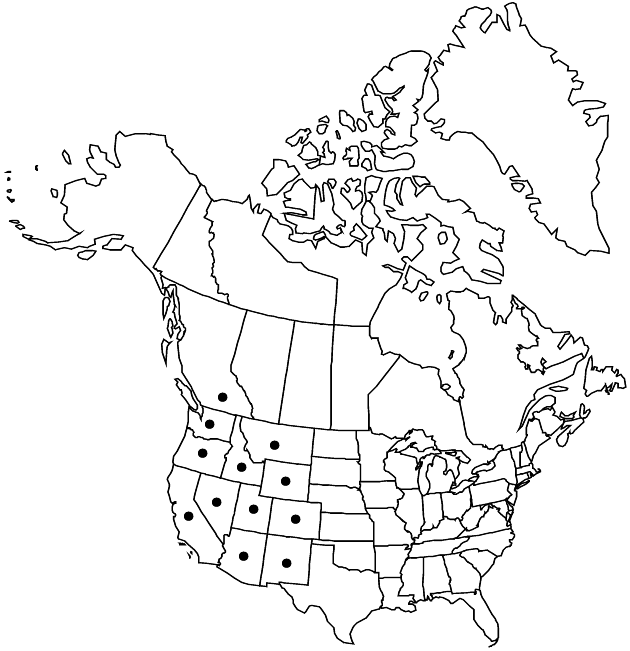Difference between revisions of "Brickellia oblongifolia"
Trans Amer. Philos. Soc., n. s. 7: 288. 1840.
imported>Volume Importer |
RevisionBot (talk | contribs) m (Bot: Adding category Revised Since Print) |
||
| Line 67: | Line 67: | ||
}}<!-- | }}<!-- | ||
| − | -->[[Category:Treatment]][[Category:Brickellia]] | + | --> |
| + | |||
| + | [[Category:Treatment]] | ||
| + | [[Category:Brickellia]] | ||
| + | [[Category:Revised Since Print]] | ||
Latest revision as of 18:30, 6 November 2020
Perennials or subshrubs, 10–60 cm (caudices woody). Stems branched, stipitate-glandular to glandular-pubescent. Leaves mostly alternate (sometimes subopposite); petioles 0; blades obscurely 3-nerved from bases, elliptic, lance-linear, or oblong, 9–40 × 1–15 mm, bases acute to attenuate, margins entire, apices acute or obtuse, faces pubescent to villous, often stipitate-glandular. Heads borne singly or in corymbiform arrays. Peduncles 2–50 mm, glandular-pubescent. Involucres cylindric to campanulate, 10–20 mm. Phyllaries 25–35 in 4–6 series, greenish, 4–5-striate, unequal, margins scarious (sometimes ciliate, apices acute to acuminate); outer ovate to lanceolate (gland-dotted to glandular-puberulent), inner linear-lanceolate to linear (glabrous). Florets 25–50; corollas pale yellow-green or cream, often purple-tinged, 5–10 mm. Cypselae 3–7 mm, stipitate-glandular or hispidulous; pappi of 18–25 white, barbellate to subplumose bristles.
Distribution

B.C., Ariz., Calif., Colo., Idaho, Mont., N.Mex., Nev., Oreg., Utah, Wash., Wyo.
Discussion
Varieties 2 (2 in the flora).
Selected References
None.
Key
| 1 | Cypselae usually stipitate-glandular, sometimeshispidulous | Brickellia oblongifolia var. oblongifolia |
| 1 | Cypselae setose-hispidulous, mostly lacking glands | Brickellia oblongifolia var. linifolia |